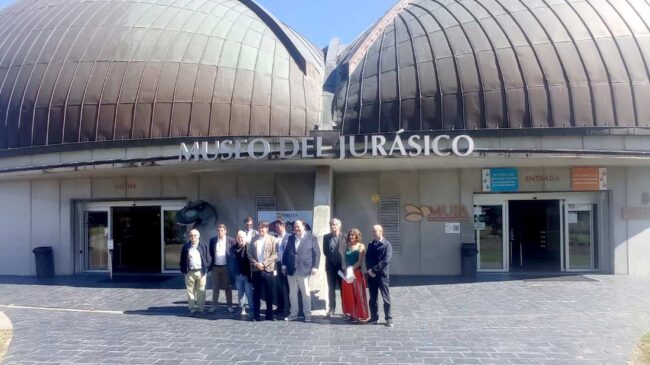The Jurassic Museum of Asturias (MUJA) has taken an important step forward in its international projection with the collaboration agreement with the Gondwana das Praeshistorium Museum, a private centre of reference in innovation applied to the exhibition of heritage and scientific dissemination.

The Regional Minister of Science, Business, Training and Employment, Borja Sánchez, and the president and founder of the German museum, Mathias Michael Kuhl, presented the agreement, signed last May, by which both centres will collaborate in the exchange of materials, exhibitions and the development of joint research projects. The event was attended by the Director General of Culture and Heritage, Pablo León, who accompanied the delegation from the German centre during their visit to Asturias.
This agreement serves as a platform for the MUJA to disseminate abroad its collection of fossils, with unique pieces, and the important research activity carried out by the team led by Laura Piñuela and José Carlos García Ramos.
In this regard, the Minister stressed that one of the priorities of his department for this new term of office is to convert the MUJA into a research centre. Sánchez indicated that the new Science Law of Asturias opens up the possibility of this recognition for the Jurassic Museum, something that will open the doors for it to have researchers and opt for international projects.
The Minister of Science pointed out that the law, which will enter the Asturian Parliament before the end of the year, will also allow other museums to acquire the category of R&D centres. This is the case of the Archaeological Museum and the Laboral Art and Industrial Creation Centre.
Regarding the agreement, Sánchez emphasised the importance of opening this avenue of collaboration with an international museum and thanked the owners of the German centre for their interest in Asturias and the MUJA.
For his part, the president of the Gondwana das Praeshistorium explained that this agreement aims to strengthen research and innovation in both centres, to create a synergy that allows, for example, to organise joint exhibitions that can be displayed in both museums; to facilitate the mobility and exchange of researchers; the transfer of pieces, and even a project linked to the creation of immersive environments in the MUJA, something in which the German centre specialises.

